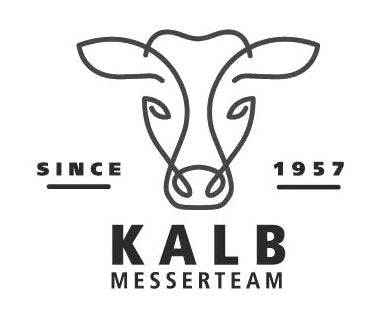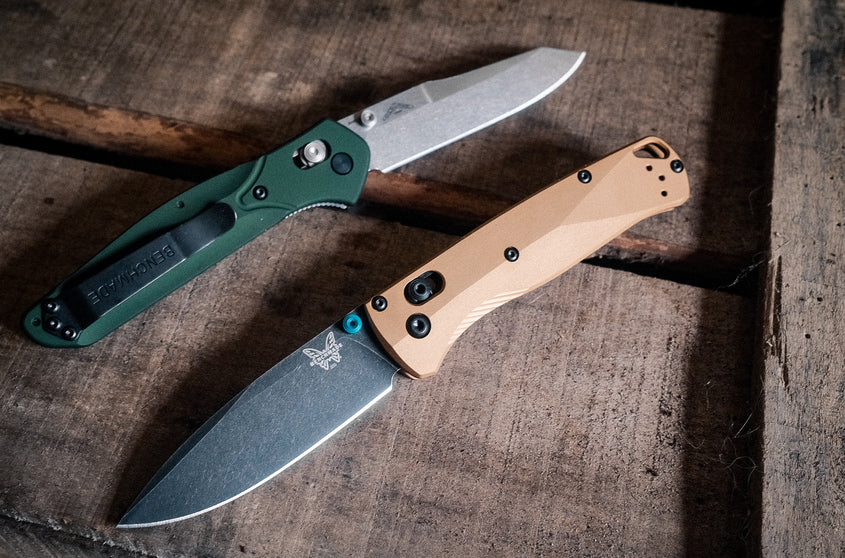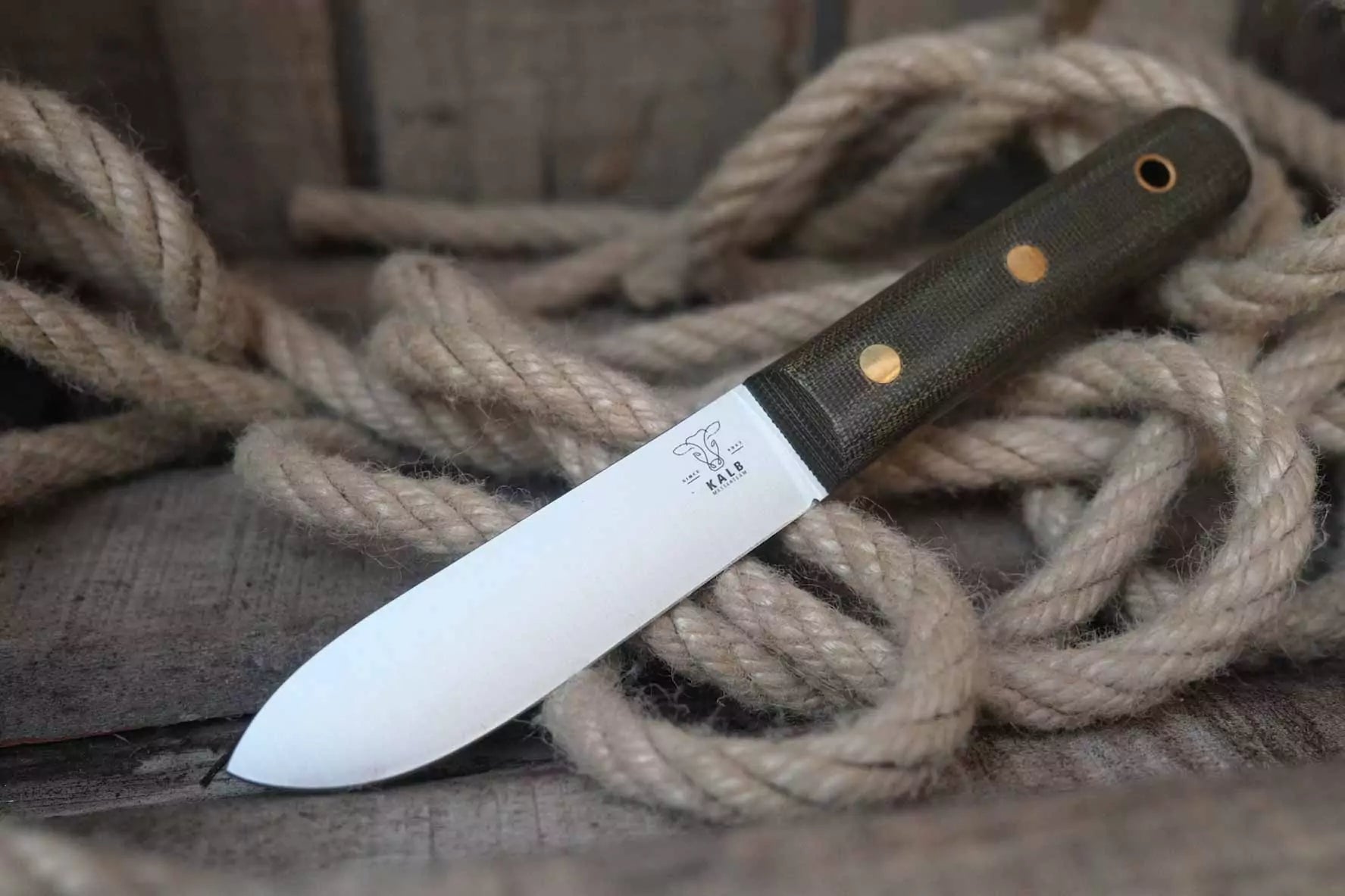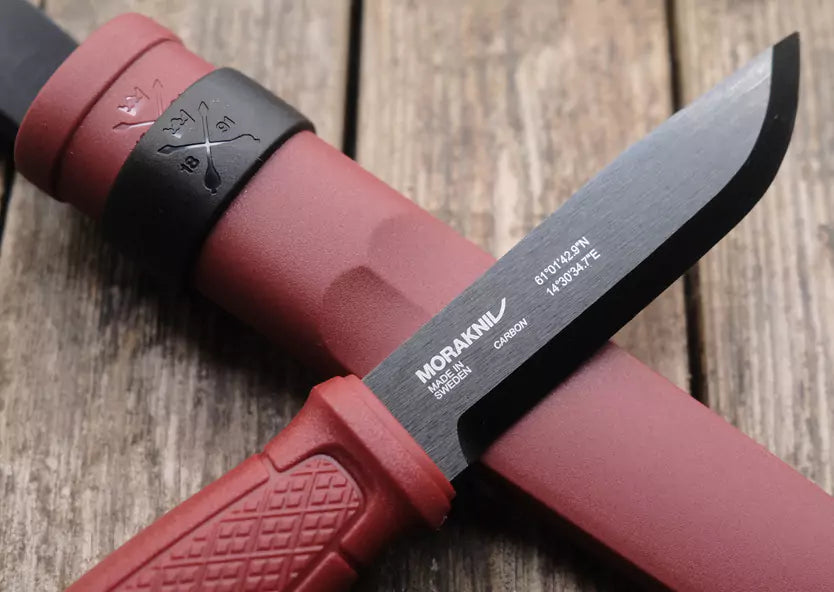Survival knife: Your lifesaver in extreme situations
In a world full of uncertainty, preparation is key. When the unexpected occurs—be it a car accident in a remote area, a natural disaster, or an involuntary night in the woods—the right tool can mean the difference between comfort and crisis. And when it comes to true survival tools, the survival knife is at the forefront. It's not just a sharp piece of steel, but your most versatile companion for critical situations.
Contents:
- Survival: A question of survival
- Survival, outdoor and tactical use: The differences
- Key criteria for the perfect survival knife
- Buying the ideal survival knife: a recommendation
- Conclusion: More than just a tool
1. Survival: A question of survival
Survival, at its core, means surviving extraordinary situations into which one has involuntarily found oneself. Unlike voluntary forest adventures, this is about sheer survival until help arrives or until one can get to safety. A good survival knife is therefore not a luxury, but essential equipment.
The survival community is diverse: from outdoor professionals to urban crisis preparedness experts, from military veterans to weekend hikers. Everyone has their own definition of what constitutes "real" survival. But one thing unites them all: an appreciation for reliable equipment that works even under the most adverse conditions.
2. Survival, outdoor and tactical use: The differences
Survival focuses on survival in emergency situations with limited resources . Here, the focus is not on convenience, but on pure functionality. A survival knife must therefore be versatile and robust—it can potentially replace several tools at once.
Outdoor/Bushcraft revolves around enjoying life in nature through specific skills . The focus here is on sustainability, traditional techniques, and respectful use of natural resources. Bushcraft knives are often more specialized for woodworking and finer carving.
Tactical applications are geared toward military or police needs . These knives are designed for tough use and are often equipped with additional features such as glass breakers or seatbelt cutters.
3. Core criteria for the perfect survival knife
Unlike bushcraft, a survival knife must withstand extreme conditions. The most important criteria when buying a survival knife are:
3.1. Unbeatable robustness
A survival knife must be virtually indestructible. The construction should have minimal weak points, which is why a full-tang blade is virtually essential. With this design, the steel runs through the entire handle, ensuring maximum stability even under extreme force.
The typical blade thickness is 4-6 mm —significantly thicker than its outdoor counterparts. This thickness allows for even tougher applications such as prying or splitting without damaging the blade.
3.2. Versatility as a survival principle
A survival knife is a multi-tool in its basic design. It should be able to perform at least the following tasks:
- Precise cutting for first aid measures
- Minor chopping and splitting work for firewood
- Effective carving to make tools and other aids
- Serve as a defensive tool when needed
Blade lengths between 12-18 cm have proven to be effective, with 15 cm representing the sweet spot between manageability and power for many.
3.3. Common blade shapes
The following blade shapes have proven particularly useful for survival:
- Drop Point : The slightly sloping blade spine makes this knife a versatile knife. The broad tip is resistant to leverage, while the slight curve of the cutting edge allows for powerful cutting.
- Tanto : This angled blade shape provides an extremely stable tip, ideal for stabbing, prying, breaking, or when great force is required at the tip.
- Modified clip point : While aggressive clip points like the one on the Buck 110 result in very fine blade tips and are therefore too fragile in survival situations, modified clip points like the one on the Cold Steel SRK, which are significantly blunter and run straight instead of concave, are quite popular with survival knives.
3.4. Steel question: toughness vs. care
There is an important compromise to consider when it comes to survival knives:
Stainless steels such as 12C27, N690, or AEB-L are low-maintenance—a decisive advantage in emergency situations where regular maintenance may not be possible. They offer good edge retention with excellent corrosion resistance.
Carbon steels such as 80CrV2 or O1 offer superior sharpness and edge retention, but require constant care to prevent rust. In humid environments, corrosion can quickly become a problem. Depending on the steel, many carbon steels are characterized by excellent toughness, which tends to reduce chipping in the cutting edge—a crucial feature for a survival knife, especially in an emergency situation.
Premium steels such as CPM S30V or Elmax combine excellent edge retention with good corrosion resistance, but are significantly more expensive.
For survival knives, stainless steels tend to be recommended, as maintenance is often neglected in emergency situations.
3.5. Handle design: life and death
The handle of a survival knife is not a matter of taste, but a critical safety feature. It must:
- Provides a secure grip even with wet or cold hands
- Do not slip during powerful cutting movements
- Be comfortable for hours of use
- Withstand extreme temperatures and UV radiation
Proven materials are:
- G10 : Glass fiber reinforced epoxy resin, extremely resistant to chemicals and temperature fluctuations
- Micarta : Made of fabric layers and synthetic resin, offers excellent grip even when wet
- Kraton/TPE : Thermoplastic elastomers with rubber-like grip, ideal for wet conditions
Finger choils (cutouts for the index finger) and jimping (ridges on the spine of the blade) aren't just a matter of taste, they're also a hotly debated topic—some love them, others hate them. Ultimately, you have to make this decision for yourself, but these shouldn't be decisive factors for (or against) a survival knife.
3.6. Useful additional functions
In contrast to the purist bushcraft approach, targeted extras on survival knives can save lives:
- Fire steel: An integrated fire steel on the sheath saves valuable space and serves as an additional safety guarantee, always having a way to light a fire with you.
- 90° blade back: A sharp-edged (not rounded) blade back is ideal for marking the fire steel as well as for scraping and debarking.
- Glass breaker: A hardened point on the end of the handle can be crucial in urban emergencies or car breakdowns, allowing you to break glass relatively safely.
- Multi-carry sheath: Allows for various carrying options and secure attachment to different equipment.
Important: Any additional function should support the basic functionality of the knife, not impair it!
4. Buying the ideal survival knife: a recommendation
Perhaps the most important aspect that hasn't been mentioned yet: The best survival knife is the one you have with you at that moment. As trite and over-repeated as this phrase may be, it's true. An emergency situation usually arises when we least expect it. For everyday use, it's a good idea to choose a knife that you'll be happy and comfortable carrying around with you at all times. Almost any EDC knife is suitable for this, from the classic Victorinox to the high-end Spyderco. Of course, it's different if you're deliberately putting yourself in a situation where you have to expect breakdowns and emergencies. This ranges from a road trip through the Swedish wilderness, where your car breaks down in the middle of nowhere in spring and temperatures drop into the single digits at night, to a 250 km solo trip through the Amazon. You should prepare accordingly for these situations and take precautions by bringing the right equipment and sensible tools with you right from the start.
When choosing the right survival knife, it is important, as explained in our bushcraft knife guide, to select a knife according to the intended purpose, the environment, and personal preference.
5. Conclusion: More than just a tool
A true survival knife isn't a status symbol or a collector's item—it's a tool that can save lives. Therefore, when choosing one, prioritize practicality over aesthetics or trendy brands. Choose a knife that:
- fits your specific survival scenarios
- your hand size and strength
- withstands your climatic conditions
- you will really use and train
And never forget: The best survival knife is the one you have with you at the crucial moment and can use confidently.
You can find a selection of different survival knives in our shop.











Leave a comment
This site is protected by hCaptcha and the hCaptcha Privacy Policy and Terms of Service apply.